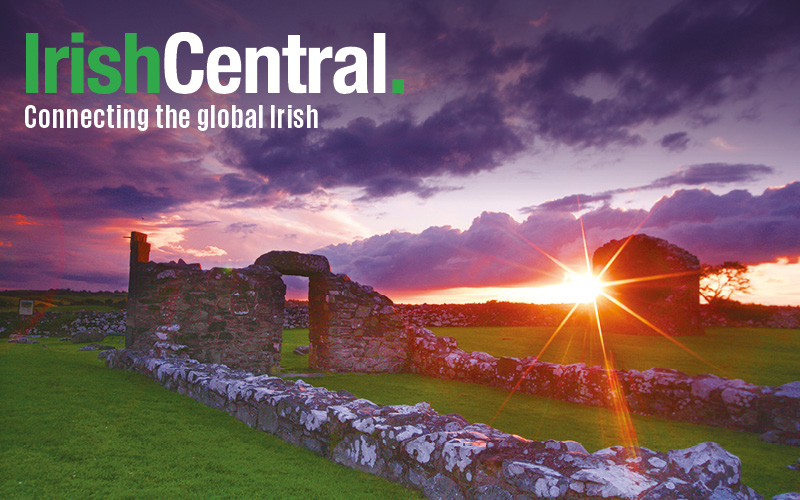“The Bloody Irish,” a musical celebrating the coming of Irish freedom and the 1916 Easter Rising, is set to air on PBS, this Saturday, October 17, in preparation for a US tour in 2016. The remarkable stage performance filled with rousing Irish ballads is sure to move audiences on both sides of the Atlantic, but it will also make them consider the meaning of the armed rebellion as we enter the centenary of the 1916 Rising.
The stage show combines songs of that time, such as “Rocky Road to Dublin,” “Monto,” and “It’s a Long Way to Tipperary,” with the poignant and human story of loss and doubt on the ground during the Rising. Barry Devlin’s play aims to steer away from the “standard reiteration” of this often discussed period of Irish history and provides a refreshing slant on the drama as it unfolds.
"Bloody Irish" 1916 musical soon to air on PBS ahead of live tour“The Bloody Irish,” a musical celebrating the coming of Irish freedom and the 1916 Easter Rising, is set to air on PBS, this Thursday, October 17, in preparation for a US tour in 2016. Read more here: http://bit.ly/1LlR9Oi
Posted by IrishCentral.com on Thursday, October 15, 2015
The show’s 23-strong cast includes Lorcan Cranitch as James Connolly, Gavin O'Connor as Patrick Pearse, as well as Lisa Lambe and Fiachna O'Braonain, among the lead vocals. Barry Devlin, musician from the famed band Horslips, is director and author of this play. He commented on what a collaborative effort between the cast, Musical Director David Downes and Show Director Michael Barker-Caven the show was.
What Barry Devlin hoped to achieve with his script was “something that wouldn't be thuddingly trite.” His aim was for something strikingly different and this musical show is certainly that.
He told IrishCentral, “This is entertainment. It's meant to be enjoyable and it's not trying to rewrite Irish history or anything, but it is trying to make a distinction from the standard reiteration of the story. And I always think that’s worth doing.”
The play opens with a little girl hauntingly singing in the foreground of the seven Irish rebel leaders as they are shot, standing on a union jack. Then we’re introduced to the narrator of the play, Sir John Grenfell Maxwell, the man tasked with the job of quelling the rebellion and pacifying Ireland. Oft painted as an ogre in the telling of this part of Irish history, here the masterful portrayal of Maxwell, by Malcolm Sinclair, provides the audience with an unreliable narrator, one who the audience cannot help but like.
“Maxwell obviously states it straight down the line as he saw it, as the empire saw it, and he only gradually comes to terms with something that he already knows,” Devlin said, "that the rebels were always going to lose and that failure was going to win it for them. They became martyrs.”
“Bloody Irish” also depicts the fear felt by the rebels themselves, showing them as mortals with doubts about their undertaking. It also refreshingly illustrates just some of what the Irish at the time would have felt about the Rising. Much of this is done through musical numbers allowing the chorus, the people of Dublin and Ireland, to air their grievances.
“What I tried to analyze was that in a way 1916 has been baked and sermonized into this perfect thing,” Devlin said. “And yet at the time it was fluid; it was a close up thing that could easily have gone either way in terms of how the public viewed it.
“That's what I'm trying to get, that time when, for people like the separation women in Dublin and for anyone who was fighting in the army, this was seen as a terrible way to behave and they were seen to have brought down the wrath of hell on them. People weren't sure for what. Of course, later on we all accepted that it was the spark that lit the fire and so on, but right then it probably didn't feel much like that.”
One of the play’s female leads is the character of Elizabeth O’Farrell, played by Lisa Lambe. O’Farrell was an Irish nurse and member of Cumann na mBan, best known for delivering the surrender in the Easter Rising of 1916. Her character, along with the younger volunteers and nurses, gives an insight into the suffering and confusion that week wrought on the people.
Lambe, formerly part of the singing group Celtic Woman, is no stranger to filming successful PBS musical shows, but she said being part of telling this story, playing O’Farrell and breathing new life into the anthemic songs in the show, was something very special.
“Most of the time the retelling of this history is very much focused on the seven heroes, but this play really gives the sense of the real lives of the people. And we don’t hear much about women’s roles in the history or how the people were affected,” Lambe told IrishCentral.
“It’s great to see real history coming alive. It’s a hundred miles away from the history books we read in school and there’s something amazing about watching it come to life. Everyone in the crew on the play had real passion about telling this story. I think this story is somehow in all our DNA.”
Lambe was also struck by how much the music, as well as the history, in the play seemed to resonate with the entire cast.
“Getting into the studio and working on these songs, songs we all know somewhere in the back of our minds but might not have heard them in a while, it just brought them to life in a really amazing way,” she said.
“Then, adding to this, the way the songs and the play were weaved into one another in almost an cinematic way. It was just fantastic to be part of it.”
Apart from a day of recording at Dublin's Helix Theatre in September before a closed audience the show has never been seen before. Now for the first time an 80-minute version of the show will premiere on PBS, on Oct 17, 2015.
“The Bloody Irish” will then be released in selected theaters from February 2016, with support from PBS, to honor the centenary of the Easter Rising before the cast and crew assemble for a live tour of the show in the USA.
For more information visit the "Bloody Irish" Facebook page and check out PBS for your local schedules for this Oct 17.




Comments